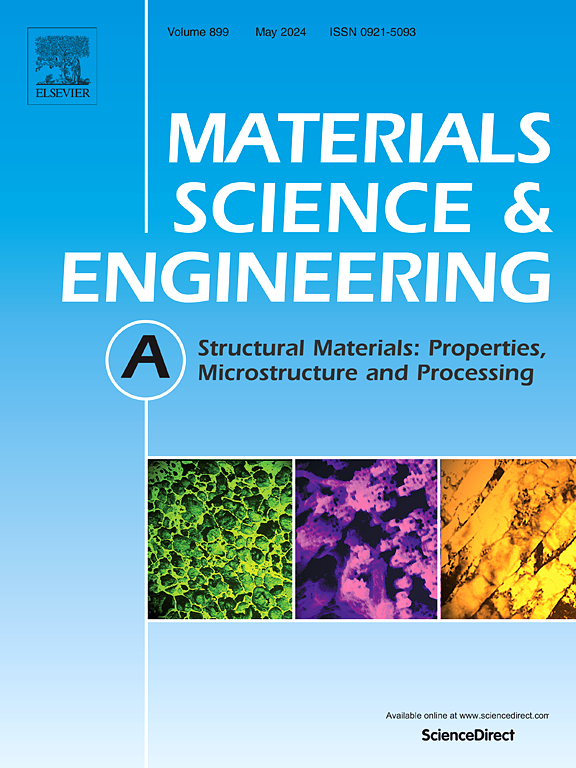Interface interlocking enhances mechanical strength of wire-arc directed energy deposited Mg-Al-Si/Mg-Gd-Y-Zn bimetals
IF 6.1
2区 材料科学
Q1 MATERIALS SCIENCE, MULTIDISCIPLINARY
引用次数: 0
Abstract
A novel Mg-Al-Si/Mg-Gd-Y-Zn bimetals with interlocking structure is manufactured using wire-arc directed energy deposition, with an interface remelting strategy. The results indicate that the bimetallic interface of non-remelting is composed of a composition transition region, with 18R-long-period stacking ordered phase and large-sized mixtures of Mg17Al12, Mg2Si as well as Mg(Gd, Y) phases. After remelting, the bimetallic interface transforms into an interlocking structure. The grains near the interface are refined and shrinkage pores are eliminated. The yield strength of bimetal increases by 18.8 %. The fracture surface shows that the non remelted sample fractures in the transition zone, while the remelted sample fractures in the Mg-Al-Si alloy region. The digital image correlation results indicate that the interlocking structure can release the internal stress of the bimetallic interface. The improved strength mainly derives from interlocking structure and grain refinement strengthening.
界面联锁提高了线弧定向能沉积Mg-Al-Si/Mg-Gd-Y-Zn双金属的机械强度
采用线弧定向能沉积和界面重熔技术制备了一种新型的互锁结构Mg-Al-Si/Mg-Gd-Y-Zn双金属。结果表明:非重熔双金属界面由组成过渡区组成,由18r长周期有序堆积相和Mg17Al12、Mg2Si以及Mg(Gd, Y)相的大尺寸混合物组成。重熔后,双金属界面转变为互锁结构。界面附近晶粒细化,收缩孔消除。双金属的屈服强度提高了18.8%。断口形貌显示,未重熔试样在过渡区断裂,而重熔试样在Mg-Al-Si合金区断裂。数字图像相关结果表明,联锁结构可以释放双金属界面的内应力。强度的提高主要来源于联锁组织和晶粒细化强化。
本文章由计算机程序翻译,如有差异,请以英文原文为准。
求助全文
约1分钟内获得全文
求助全文
来源期刊

Materials Science and Engineering: A
工程技术-材料科学:综合
CiteScore
11.50
自引率
15.60%
发文量
1811
审稿时长
31 days
期刊介绍:
Materials Science and Engineering A provides an international medium for the publication of theoretical and experimental studies related to the load-bearing capacity of materials as influenced by their basic properties, processing history, microstructure and operating environment. Appropriate submissions to Materials Science and Engineering A should include scientific and/or engineering factors which affect the microstructure - strength relationships of materials and report the changes to mechanical behavior.
 求助内容:
求助内容: 应助结果提醒方式:
应助结果提醒方式:


